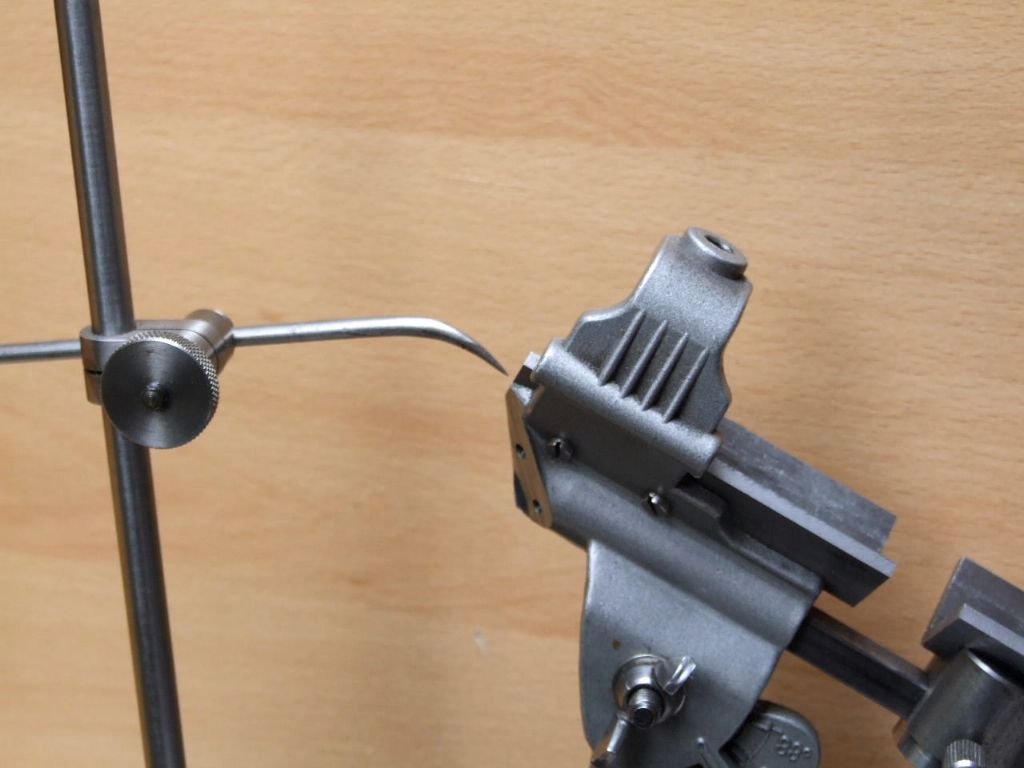Hello Mark,
The two photographs below shows what happens when the drill angle is altered. In the first at 59 degrees the pivot centreline goes through the point at the end of the vee guide. This is represented by the pointer or scriber. It is from this point that the drill extension is measured to ensure the correct drill grinding geometry. The second photo shows what happens when the angle is altered to 45 degrees, the pointer has not moved.
There is a compromise with the original jigs as pointed out in my original article. If they are going to grind a myriad of angles then they are never going to grind one correctly without a certain amount of luck.
To get the jig to grind at 45 degrees reliably then it will either mean going through the whole sequence of evaluation which I went through,again, or play with the original jig at or near maximum eccentricity. Unless there is a requirement for a large number of drills ground to these angles, then it is far easier to compromise.
The original project I had in mind was to get this simple jig to work reliably each time at 59 degrees by following 4 simple steps. In using this jig it would be as quick as grinding by hand, but give a reliable result equal to a new drill
The eccentricity or offset is diameter dependant. The larger the drill diameter, the larger the offset, D/13 is the ratio required.


Regards
Gray,
Nathan Sharpe.






